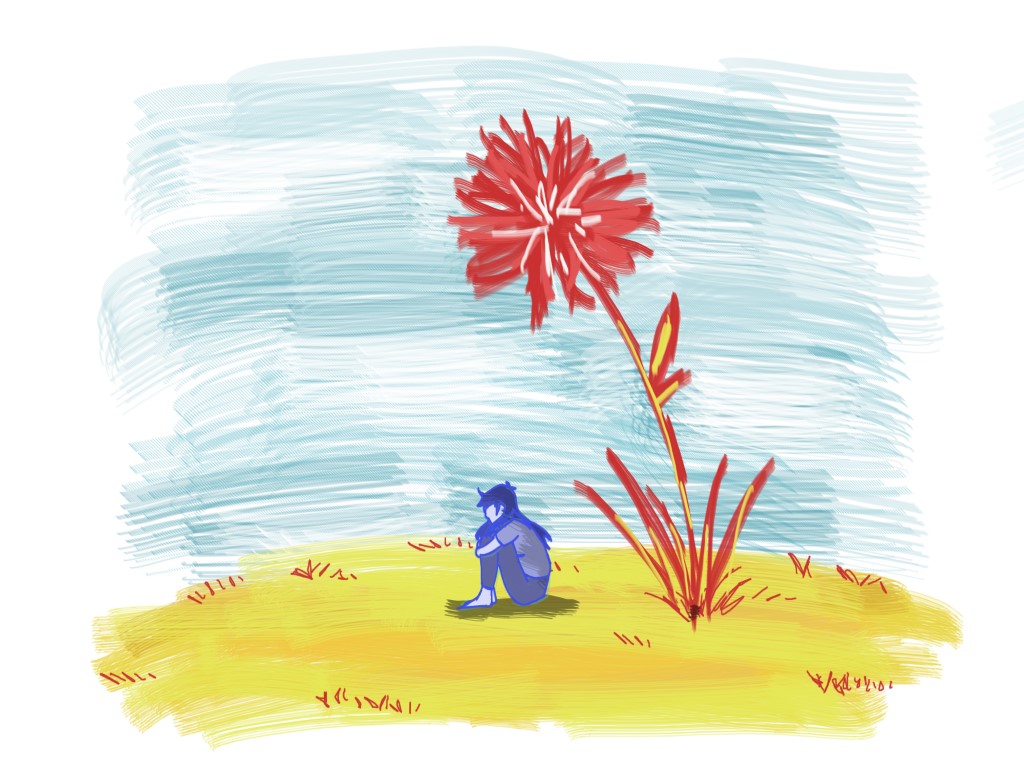
An exploration into the making of the music video
By CJ Sommerfeld,Staff Writer
While the illustrations have a child-like quality to them, the video’s themes—environmental collapse, neo-capitalism and colonialism reveal the adult and dismal essence of the track.
In 2020, after nine years of being musically dormant (to the public), alt-rock group Bright Eyes released an album titled Down in the Weeds, Where the World Once Was. The first video for the album—a fury of Indian-ink animations—was released for their single “Mariana Trench” on June 22. Just last month, however, another video came out, uncovering how the hand-illustrated stop motion came to be.
A troupe of 2D animators and designers from Art Camp—a video, animation, photography, and design creative studio—were responsible for the making and directing the 2,210 hand-illustrated frames. Artists from the United States, Singapore, Switzerland, and India contributed to the four-minute animation, each of which were assigned to complete between 200 and 300 illustrations. These hundreds of illustrations resulted in a mere 20 to 30 seconds of stop-motion per artist.
The animation is described as depicting “a journey to a celebration for the end of the world,”—a euphonism to the harm that human has self-inflicted and spread to one another and our Earth. The video follows a young girl running through a buffalo-clad space, rich in nature, until she is faced with a cliff. She is then being followed, running through a maze of Roman-esque structures when buildings and laborers appear briefly before the structures are overtaken by flames. The remaining images in the video show the contiguity of battle and harmony—uniting human and nature. The video concludes with a mass of people surrounding an ablaze tower, above which, Bright Eyes plays. Neanderthals, the 20th century human, and animals dance amongst the fire and smoke, alluding to the capitalistic mess which the current state world is in. All of which is depicted in an abstract mass of ink splotches and drawings.
While the illustrations have a child-like quality to them, the video’s themes—environmental collapse, neo-capitalism, and colonialism reveal the adult and dismal essence of the track. These blatant images accompany the tune’s undisguised/overt lyrics: “Well, they better save some space for me/ In that growing cottage industry/ Where selfishness is currency/ People spend more than they make […] The closing bell death tolls/ Hear the market crash/ A crying trader swears he’ll get out of the game […] Look out for the plainclothes/ Look out for what the wiretap knows/ Look out on the ever-widening money trail and where it goes/ It takes a lot of gall to try to please/ These dehumanizing entities/ I befriended all my enemies/ They had my back against the wall / Oh, a coward is what a coward does.”
Mariana Trench is the deepest oceanic depression on Earth. What a great figure of speech to convey the current sociopolitical state that us Westerners are in. “Look up at that Everest/ Look down in that Mariana Trench”—look up at the one percent, look down at the juxtaposed rest. The song begs the question, can human demoralize further than they currently have, and if so, what will that look like?


